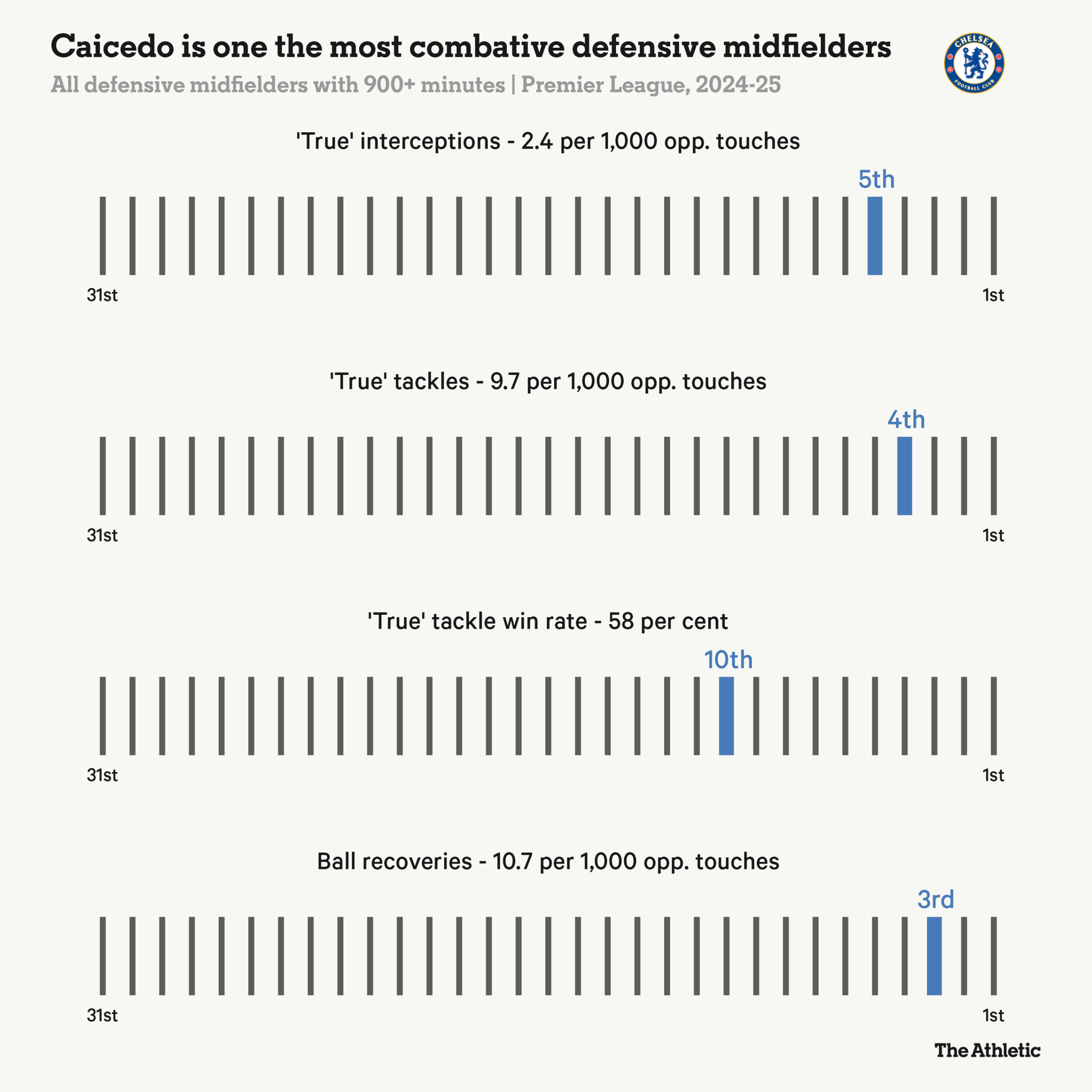
Cole Palmer looked more comfortable on the pitch than at any other time since January in Chelsea’s 3-1 victory over Liverpool. He also looked more at ease than at any other time in his post-match interview when he was invited to praise the team-mate standing next to him.
“When you’ve got (Moises) Caicedo next to you, it’s a dream, really,” he told Sky Sports. “From the start of the season until now, he’s been our best player. He’s a machine. He wins everything back (for the team), always gives 100 per cent every day, he’s humble, he’s nice to everyone and everyone loves him.”
Cole Palmer says he doesn’t pay attention to ‘social media trolls’ and the comments don’t affect him ❌ pic.twitter.com/xj7wDHwQg4
— Sky Sports Premier League (@SkySportsPL) May 4, 2025
The rest of the Chelsea dressing room and a majority of the voting supporters clearly agree, since Caicedo took home both of the men’s first-team player of the year gongs at the club’s awards night at Grosvenor House following the Liverpool win last Sunday.
Caicedo’s candidacy was strong even before Palmer entered his 18-game goal drought. He is the only Chelsea player to start all 35 Premier League matches this season and, for long stretches, has given the impression that his ferocious tackling, relentless intensity and smart distribution were the glue holding Enzo Maresca’s team together. The numbers, illustrated below, back that up (true tackles are tackles attempted plus fouls plus challenges lost, and true interceptions are interceptions plus blocked passes).

But his case has arguably been further strengthened in the last week by the return from injury of Romeo Lavia. Maresca’s preferred method of integrating the Belgian into his team is to recast Caicedo as a right-back who moves into the base of midfield, and the Ecuador international has embraced this combination of novel and familiar responsibilities with trademark enthusiasm.
Advertisement
Lavia’s ability to identify and play passes that break the opposition’s midfield line dramatically expands Chelsea’s capabilities in possession, and he demonstrated as much by slipping Palmer in behind Curtis Jones to ignite the move that yielded the opening goal against Liverpool. But those gains can only be consolidated if Caicedo can bring his usual dominating presence to central midfield while not neglecting his right-back responsibilities.
The early indications suggest that he can; Liverpool’s visit was the fifth Premier League game this season that Caicedo has started at right-back with Lavia as the No 6, and Chelsea have won four of them (the other being a 2-2 draw with Bournemouth at Stamford Bridge in January).
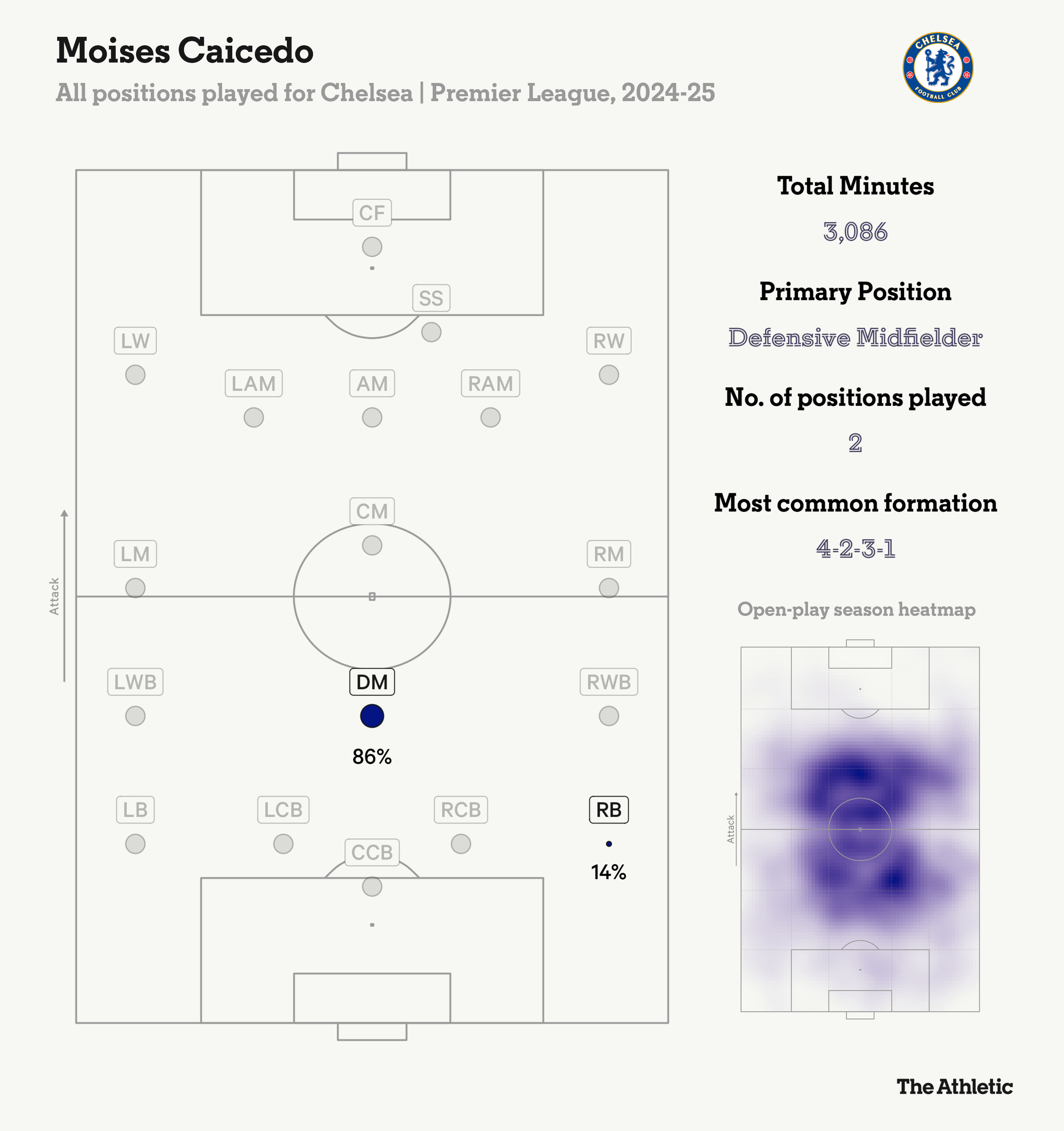
Caicedo’s natural aggression translates readily to the right flank, where he is always looking to pick off passes hit towards the winger he is marking. Shortly before half-time against Liverpool, he pounced on a ball out of the visitors’ defence intended for Cody Gakpo.
Lavia then picked out Nicolas Jackson in the penalty area, but the striker was narrowly offside:
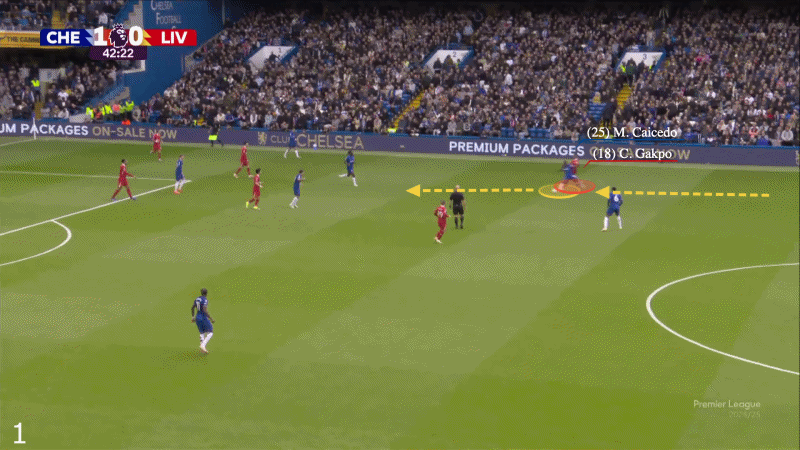
Despite this front-foot approach, Liverpool found it difficult to exploit the space behind Caicedo. He is agile and aware enough to pick off passes aimed over his head. He sprinted back with Gakpo to nod this floated pass from Jones on to goalkeeper Robert Sanchez:
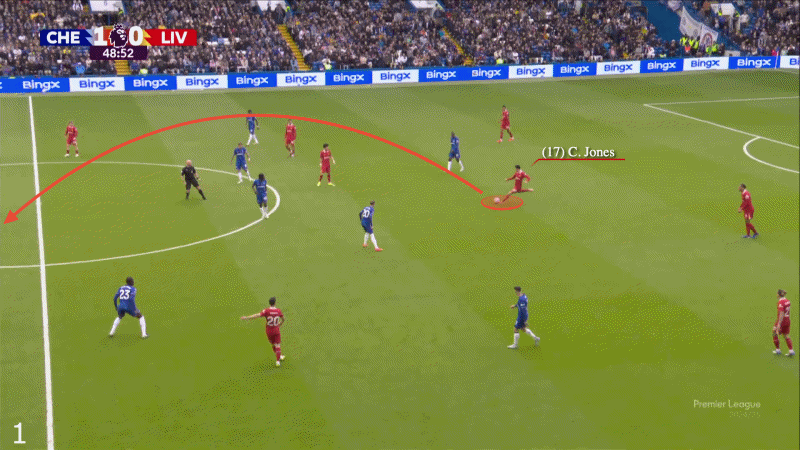
Liverpool were only able to get behind Caicedo once, when Kostas Tsimikas pinned the Ecuador international to his back in the ninth minute before laying the ball off to Gakpo. Pedro Neto did not track the Dutchman’s run and Caicedo could not recover, but Sanchez saved the eventual shot comfortably:
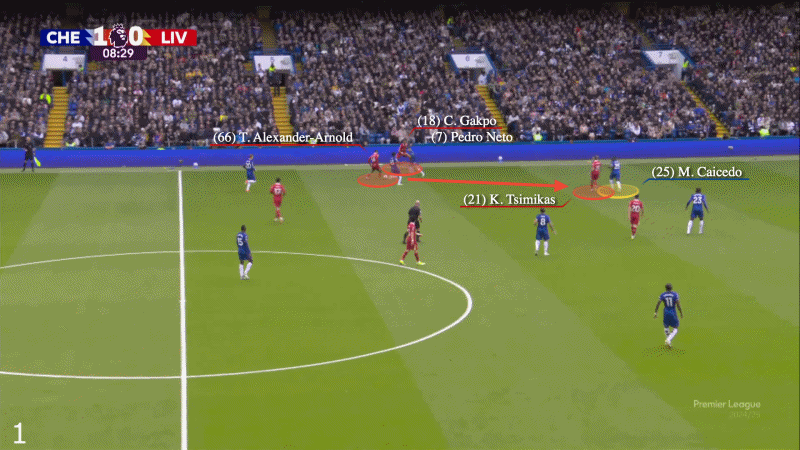
Caicedo’s unique ability to do two jobs at once is best highlighted by the sequence below from Chelsea’s 1-0 win over Everton.
In the 11th minute, he made a trademark interception in the middle of the pitch, jumping in front of Iliman Ndiaye to poke the ball towards Palmer. He fell to the floor on landing but when possession was quickly lost, he got back to his feet and sprinted with Ndiaye back towards the left touchline, scrambling to his defensive position so quickly that the Everton winger ultimately decided to abort his forward run:
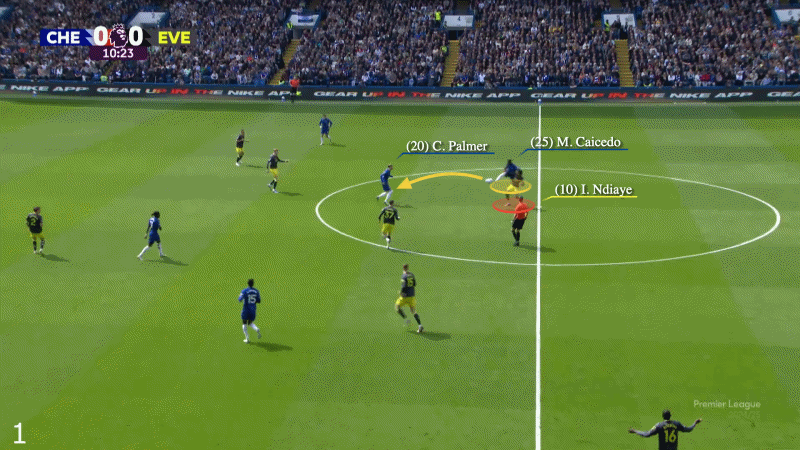
Caicedo, 23, may not be quite the progressive passer that Lavia is, but in this hybrid positional role, he is a meaningful passing upgrade on Malo Gusto or even club captain Reece James, the two other players Maresca has deployed as inverting right-backs in the Premier League this season.
Here he is against Tottenham Hotspur in December, bringing down a looping cross from Brennan Johnson under immediate pressure from Dejan Kulusevski in his own box and calmly curling a left-footed pass out to Neto:
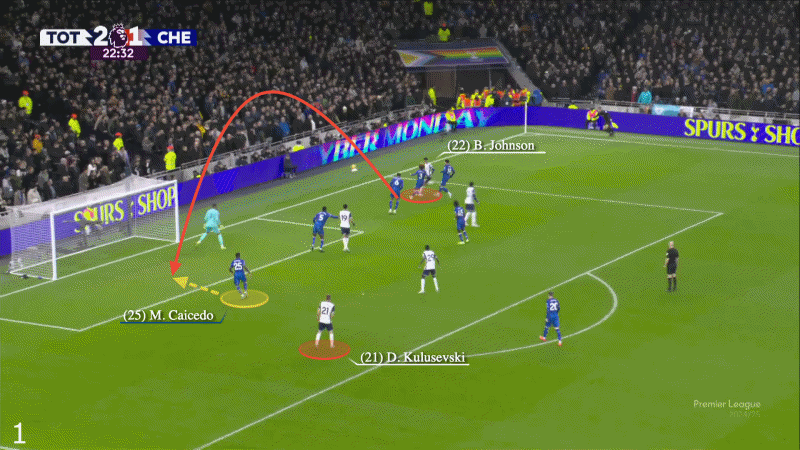
‘Inverted’ into central midfield in the 36th minute against Aston Villa, he rattled a pass between two opponents and Lavia into the feet of Enzo Fernandez, initiating the slick move involving Palmer that ended with the Argentina international firing in Chelsea’s second goal of the game:
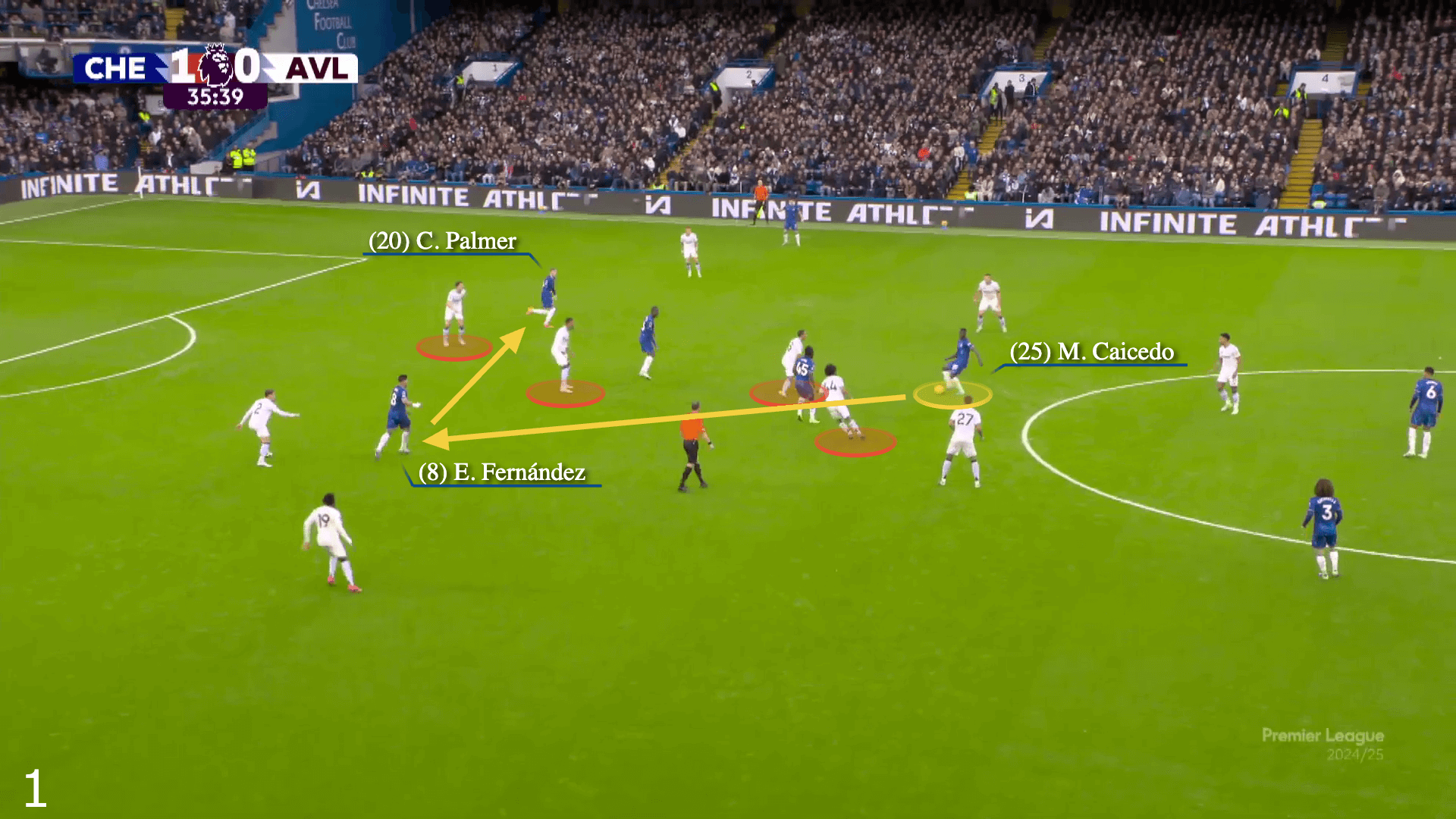
Antoine Semenyo is the one winger who has given Caicedo real trouble as a right-back, beating him one-vs-one to clip in a dangerous low cross in the first half. He then outsprinted Caicedo and lured him into a clumsy barge in the penalty area early in the second half, after Justin Kluivert had dispossessed Lavia:

Caicedo’s excessive eagerness to win the ball back is the only obvious weak spot in his game. He has garnered 10 or more yellow cards in each of his last three Premier League campaigns for Chelsea and Brighton & Hove Albion and is averaging 3.2 fouls per 1,000 opposition touches this season, second only to former team-mate Alexis Mac Allister in the competition.
Advertisement
But it is more a matter of minor adjustment than major adaptation. Chelsea want and need Caicedo to be aggressive in his pursuit of the ball and that, coupled with his indefatigable engine, enables him to be hugely influential in the closing stages of matches back in his natural midfield role when Lavia — who is still yet to complete 90 minutes for Maresca — leaves the field.
Caicedo helped Chelsea cement their territorial dominance once he was restored full-time to the middle of the pitch against Villa in December. In this pretty ridiculous sequence, he charged forward to make a successful tackle in the attacking third, then immediately pivoted and jumped to pluck the visitors’ attempted clearance out of the air and regain possession for his team:
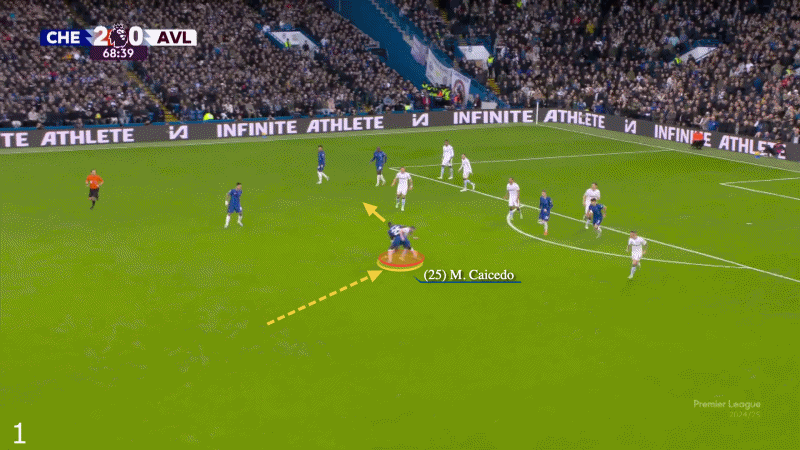
Perhaps the most consequential example of Caicedo’s relentlessness came in the 95th minute against Liverpool. He had no right to beat Jarell Quansah to Dominik Szoboszlai’s sloppy infield pass in the visitors’ penalty area, but did so with sufficient poise to win the spot kick that sealed Chelsea’s biggest win of 2025 and enabled Palmer to end his scoring slump:
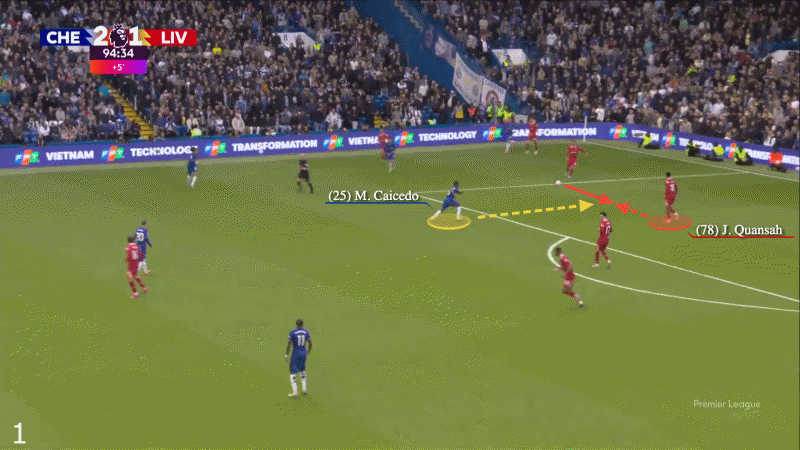
The ease with which Caicedo has adapted to his positional shift evokes memories of Chelsea legend Michael Essien, who continued to be one of Jose Mourinho’s best and most consistent performers when injuries elsewhere required him to move from midfield to right-back for much of the 2006-07 season — even surging upfield to score one of the greatest goals Stamford Bridge has ever seen to earn a 1-1 draw against rivals Arsenal.
Essien was rewarded for his positionless brilliance by being named the club’s player of the season in 2007. Caicedo may now be on a similar path, and his versatility is enabling Chelsea to build real momentum in this defining final stretch of the season.
Additional reporting: Mark Carey
This news was originally published on this post .






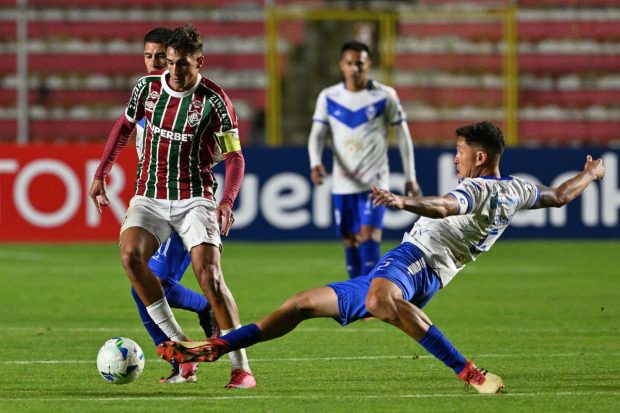



Be the first to leave a comment